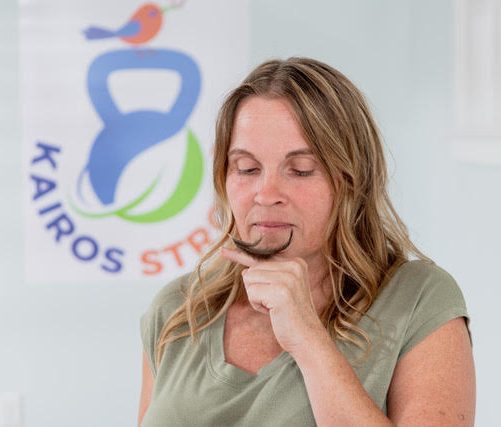Re-educate your breathing for health & well-being
Learn a compilation of simple scientifically proven breathing exercises designed to open airway, improve blood circulation and oxygen delivery, increase lung capacity and heart rate variability, and improve your overall health.
Signs of Dysfunctional Breathing:
- Fast breathing or upper chest movement
- Paradoxal breathing
- Sleep disturbances, insomnia, sleep apnea, snoring
- Labored breathing or excessive breathlessness during exercise, while talking, or even at rest
- Anxiety or stress
- High Blood Pressure
- Frequent sighing or yawning
- Chronic congestion /asthma / respiratory issues
- Fatigue
- Inattentive/distractible/ ADHD
- Pelvic floor pain or neck and shoulder tension
- Circulation issues: Cold hands and feet

Nasal Breathing: Essential, But Not Enough
We know that nasal breathing is key for health- it filters and humidifies the air, supports proper tongue posture, and helps regulate the nervous system. but here’s the thing: breathing through your nose alone is not enough. It’s possible to breathe entirely through your nose and still over-breathe and take in too much air, breathe too fast, or using improper mechanics. Over-breathing can disrupt oxygen delivery, keeping the nervous system in a stressed state, and reinforce dysfunction. To address this, we explore the multi-dimensional aspects of breathing, focusing on techniques like breathing lightly, deeply, and slowly and targeting biochemistry, biomechanics, mindfulness. Treatment may involve a combination of targeted breathing exercises to help regulate the nervous system, along with movement, posture correction, and relaxation practices to restore balance and efficiency in breath patterns.
Breathing therapy can help achieve:
Therapy helps restore your natural breathing rhythm, promoting balance and relaxation. Understanding and consciously adjusting the rhythm of your breath can have profound efffects on both your physical and mental health, imporiving oxygen flow, reducing stress, and enhancing overall well-being.
Learn how to adapt your breathing techniques to fit your unique needs, whether it’s to rev up energy, calm your nerves before a test or public speaking, help manage blood pressure, or enhance overall respiratory health. By identifying personalized exercises, you can support your long-term well-being.
Techniques are taught to help clear nasal passages, allowing for smoother and easier breathing.
By strengthening the diaphragm, you can increase your lung capacity and breathe more deeply with less effort. This in turn, is crucial for for pelvic health, as the diaphragm and pelvic floor muscles work together as part of the core system, supporting overall stability. Additionally, a strong diaphragm is vital for spinal stability and back health, as it helps maintain proper posture and reduces strain on the spine during movement.
Proper breathing techniques can improve oxygen intake, enhancing endurance and overall athletic performance. Advanced techniques can simulate altitude training to stimulate the body’s adaptation to lower oxygen levels, which increases red blood cell production and improves oxygen efficiency for athletes or those traveling to higher altitudes.
Breathing exercises help relax the body and mind, promoting deeper, more restful sleep. Snoring, sleep apnea, and poor quality sleep are related to breathing patterns.

